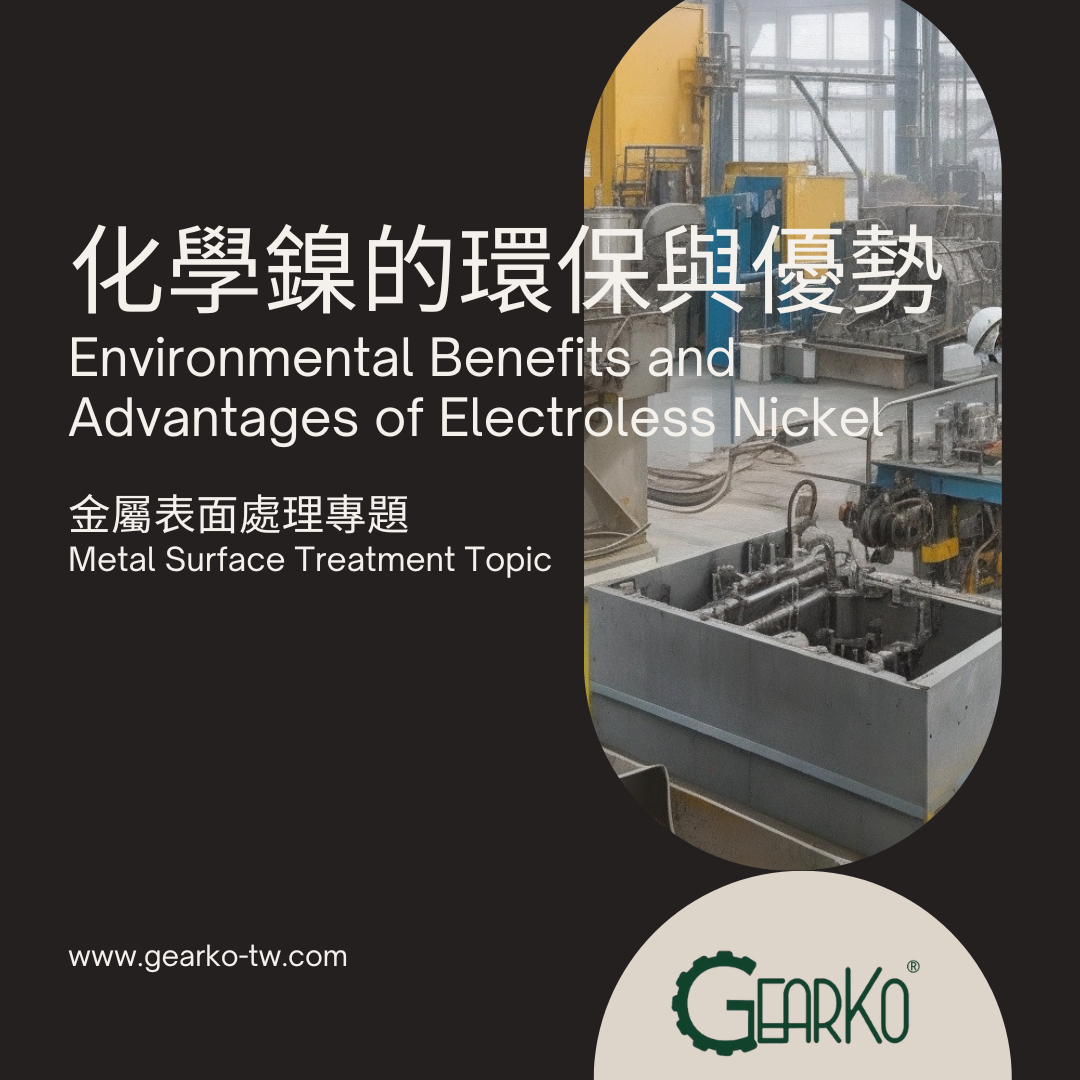2023.08.25
Metal Surface Treatment Topic: Environmental Benefits and Advantages of Electroless Nickel

Nickel is one of the most common metals that cause allergic reactions in humans. In the past, items like coins, earrings, and other jewelry often contained nickel, which could come into contact with the skin. Nickel ions can penetrate the skin through pores and sebaceous glands, leading to skin allergies or irritations such as itching. Not everyone experiences these inflammatory symptoms. Initially, some unscrupulous manufacturers of hypoallergenic jewelry used nickel electroplating to cut costs. Recognizing the harm this could do to humans, the industry gradually shifted to electroless nickel plating (chemical nickel). In industry, nickel plating is primarily used for its aesthetic appeal, excellent corrosion resistance, and good wear resistance.
Evolution of Nickel Plating Technologies: Electroplating vs. Chemical Nickel
The technology of nickel electroplating dates back to 1844, when A. Wurtz discovered that nickel could be reduced from a solution of nickel salts by adding hypophosphite, facilitated by the action of an electric field at the anode, causing directed movement of nickel ions to form a plating layer.
The origin of electroless nickel plating (chemical nickel) can be traced back to 1944, with the discovery by A. Brenner and G. Riddell from the National Bureau of Standards in the United States. They found a method for non-powdery nickel deposition, although it was not initially given much attention. After World War II, the United States' General Transport Company became interested in surface nickel plating for transporting caustic drums, as conventional electroplating could not meet the requirements. Several years of research led to the development of electroless nickel-phosphorus alloy technology. Numerous patents were issued, and the first experimental production line was established in 1955, leading to the commercialization of electroless nickel plating. The specific process involves the reduction of nickel ions in aqueous solution under certain conditions, which then precipitate onto the solid substrate surface.
Differences Between Electroplated Nickel and Chemical (Electroless) Nickel
|
Criteria |
Electroplated Nickel |
Chemical (Electroless) Nickel |
|
Principle |
Requires electric current |
Self-catalyzed reaction |
|
Speed |
Fast |
Slow |
|
Environmental Risk |
High |
Low |
|
Cost |
Low |
High |
|
Wear Resistance |
High |
Moderate |
|
Hardness |
High |
Slightly lower |
|
Ductility |
Poor |
Moderate |
|
Uniformity |
Poor (affected by current density) |
Good |
|
Depth of plating |
Poor |
Good |
|
Adhesion |
Moderate |
Good |
|
Layer Density |
Poor |
Good |
|
Porosity |
High |
Low |
GearKo’s planetary gear reducers feature exterior metal components that come into direct contact with the human body. These components are treated with human-friendly electroless nickel (chemical nickel) plating. The entire process is outsourced and environmentally monitored, in compliance with international environmental and safety standards. You can use it with confidence. If you have any related needs, please feel free to contact us.
Further reading:
Metal Surface Treatment Topic - Ionic Nitriding Treatment (Ion nitriding)
Metal Surface Treatment Topic - Carburizing Treatment
Metal Surface Treatment Topic- Nitriding vs. Carbonitriding Surface Heat Treatment Comparison
Metal Surface Treatment Topic: The Role of Anodizing in Planetary Gear Reducers